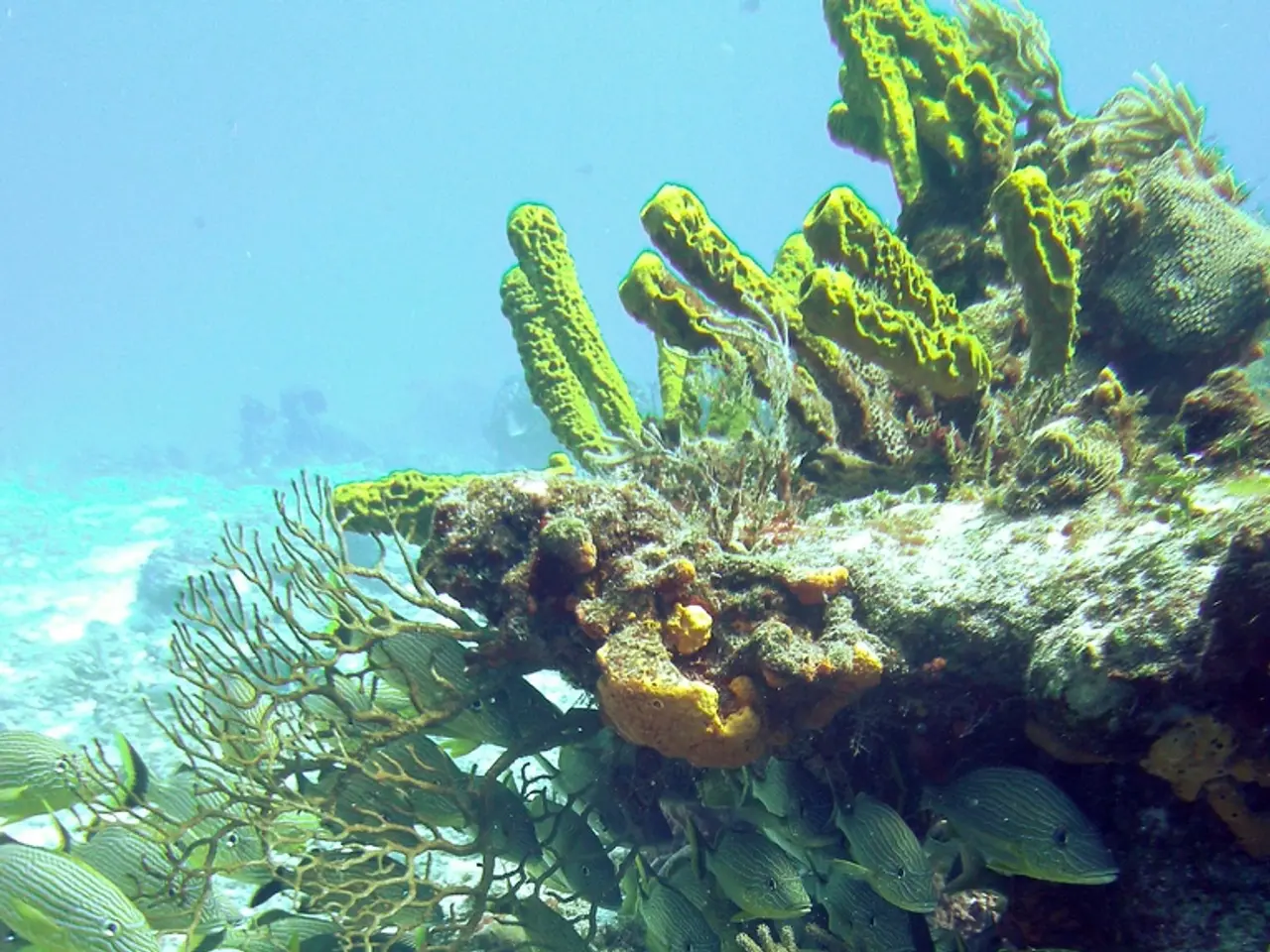Decade-long advancements in ocean depth mapping, persistent issues, and future prospects
In recent years, the field of ocean bathymetry has seen a significant leap forward, thanks to advancements in technology, global collaboration, and scientific research. This transformation is making it possible to map the seafloor with unprecedented accuracy, detail, and efficiency.
One of the key drivers behind this progress is the use of advanced seafloor mapping technologies such as Multibeam sonar, LiDAR, and Satellite-Derived Bathymetry (SDB). These technologies have dramatically increased the scale and precision of mapping, enabling continuous monitoring of nearshore changes and the study of challenging, dynamic coastal environments.
SDB, in particular, has demonstrated significant improvements in data acquisition, resolution, and application scope. Remote, rapid, and continuous mapping is now possible using optical satellite sensors, allowing for the monitoring of nearshore changes on local to global scales. High-resolution intertidal topography can be derived with resolutions around 3 meters and vertical accuracy near 0.35 m, providing valuable insights into coastal lowland maps.
The integration of airborne LiDAR systems, like RIEGL's VQ-840 GL Topo Bathymetric LiDAR, deployed on drones or remotely piloted aircraft, complements satellite-derived data by providing very high-resolution shallow water and nearshore terrain mapping. This integration supports comprehensive environmental monitoring, even in complex or sensitive aquatic environments, minimizing environmental impact while improving blue carbon habitat research and marine/freshwater studies.
Machine learning algorithms have further enriched the possibilities of feature extraction from bathymetry data sets. New learning algorithms can locate underwater structures, sediment types, and ecological habitats more efficiently than conventional techniques. AI, machine learning, and deep learning will revolutionize automated feature detection and error reduction of bathymetric data, improving data accuracy and shortening processing time.
Compartmentalized systems such as autonomous underwater vehicles (AUVs) and unmanned surface vehicles (USVs) have expanded the capabilities of bathymetric and hydrospatial surveys to complex and sometimes dangerous areas. These systems are transforming how data is collected and applied for environmental monitoring, marine research, and coastal management.
However, the use of these advanced bathymetric technologies is not without its challenges. High costs, special training requirements, or unavailability limit their use in many under-resourced nations. This limitation maintains the divide in global bathymetric data, with significant discrepancies in sub-Saharan Africa and parts of Southeast Asia.
To address this issue, the International Hydrographic Organization (IHO) has launched initiatives like the Capacity Building Initiative, which aims to enhance the technical and institutional capacity of under-resourced nations. This program improves developing nations' capacity to engage in bathymetric efforts through capacity building, knowledge transfer, and funding support.
Multinational web-based tools and data releases, like the IHO's collaboration with the GEBCO Strategy 2023-2030, will stimulate international projects to undertake bathymetric studies. Data sharing is transitioning to future platforms based on cloud computing and blockchain technology, enabling open and direct data sharing between buyers, suppliers, and third parties. This will support data-sharing platforms that facilitate global collaboration and data integrity of ocean bathymetry safely and transparently.
The role of citizen science in expanding data coverage is crucial for the expanded data collection effort. Recreational boaters, fishers, and coastal communities are encouraged to contribute geospatial data in the hydrospatial domain.
In conclusion, the advancements in ocean bathymetry are transforming how we collect and apply bathymetric data for environmental monitoring, marine research, and coastal management. The integration of satellite optical sensing, altimetry, and airborne LiDAR technologies is revolutionizing the field, making it possible to map the seafloor with unprecedented accuracy, detail, and efficiency. However, it is essential to address the challenges faced by under-resourced nations to ensure equitable progress in bathymetric science and global cooperation.
- The scientific research in marine science, particularly ocean mapping, is thriving due to advancements in technology, aiding the safety of navigation and the study of hydrographic survey.
- These advancements are making it possible to map the ocean floor with an unparalleled level of accuracy, detail, and efficiency, thanks to technologies like Multibeam sonar, LiDAR, and Satellite-Derived Bathymetry (SDB).
- Machine learning algorithms and AI are playing a pivotal role in feature extraction from bathymetry data sets, automating the detection of underwater structures, sediment types, and ecological habitats.
- The integration of technology, such as autonomous underwater vehicles (AUVs) and unmanned surface vehicles (USVs), is enabling data collection in complex and dangerous areas, improving marine research, environmental monitoring, and coastal management.
- To bridge the gap in global bathymetric data, particularly in under-resourced nations, organizations like the International Hydrographic Organization (IHO) are launching initiatives for capacity building, knowledge transfer, and funding support.
- The future of bathymetric data sharing is moving towards web-based platforms based on cloud computing and blockchain technology, enabling open and direct data sharing between parties for enhanced global collaboration.
- Citizen science is proving crucial for expanding data coverage in the hydrospatial domain, where contributions from recreational boaters, fishers, and coastal communities are highly valued in the data collection effort.




